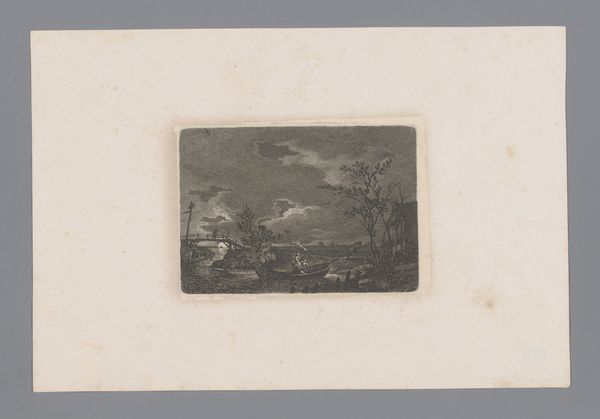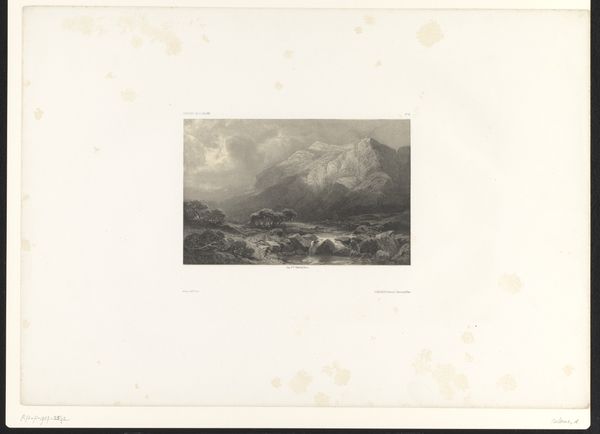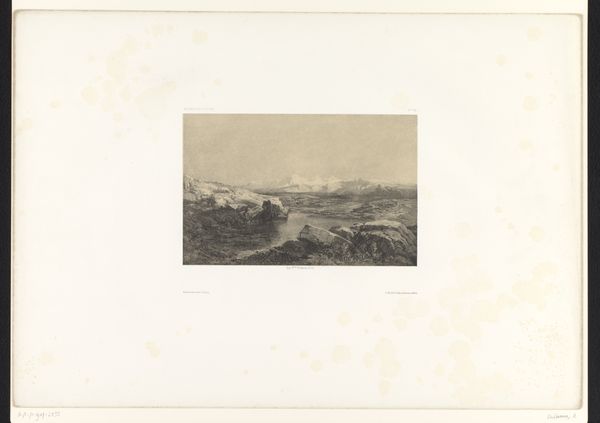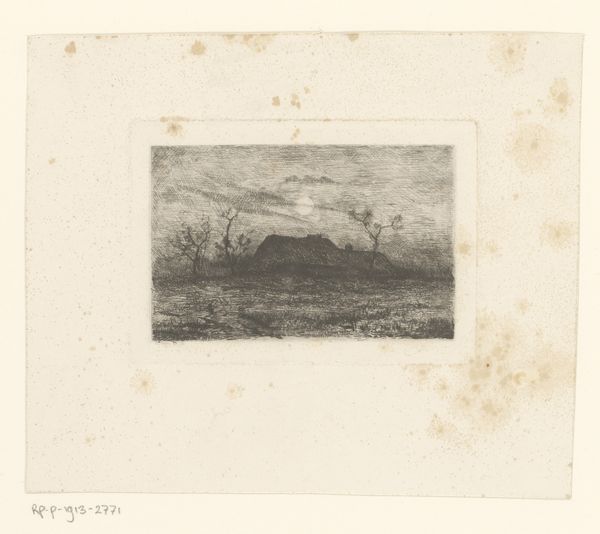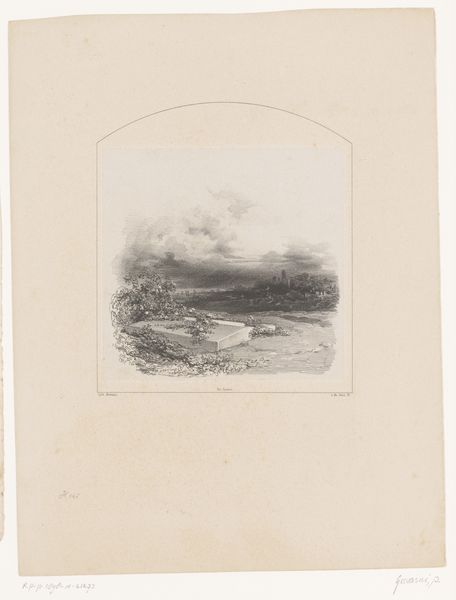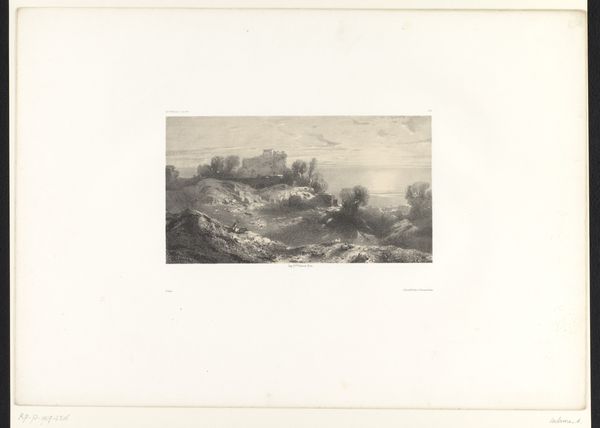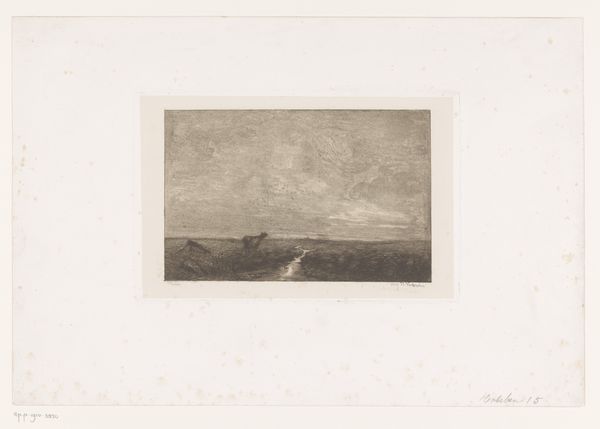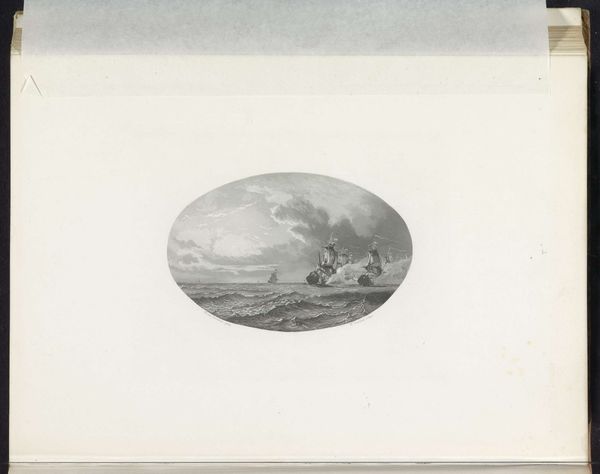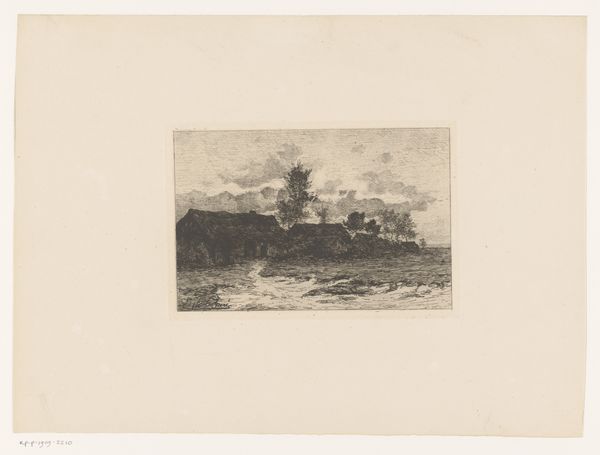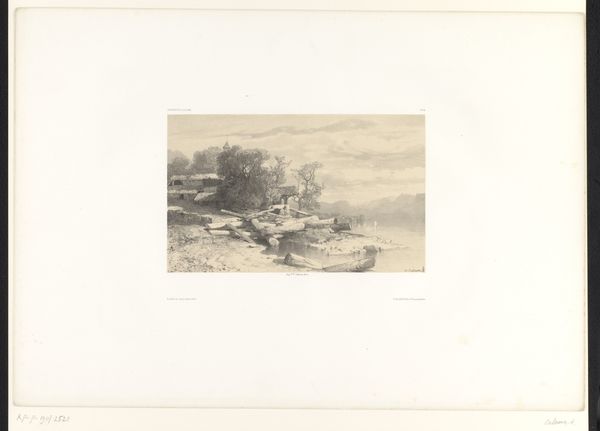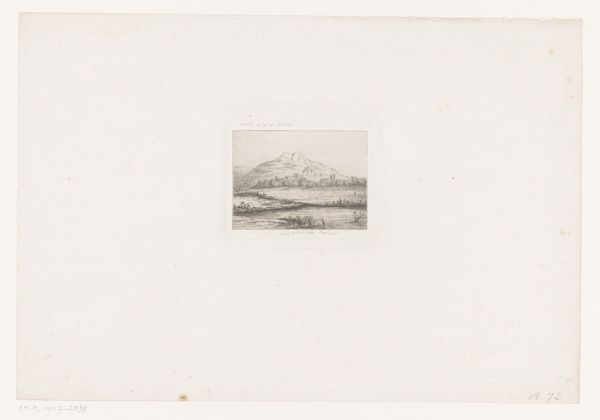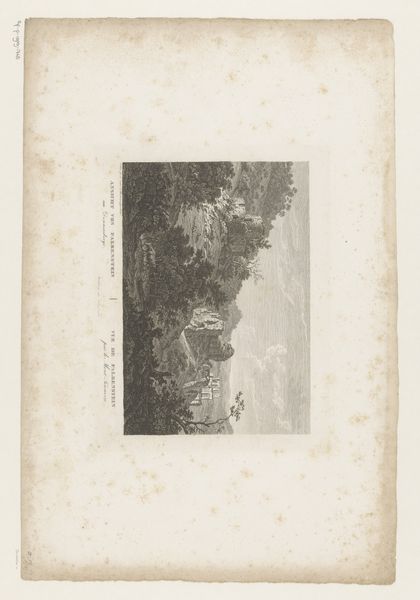
drawing, paper, ink
#
drawing
#
landscape
#
paper
#
ink
#
realism
Dimensions: height 84 mm, width 128 mm
Copyright: Rijks Museum: Open Domain
Editor: This ink drawing on paper, titled "Nachtelijk zeegezicht," or "Night Seascape," was created around 1827 by Carl August Lebschee. I'm struck by the turbulent energy he's captured; the waves almost feel threatening. How do you interpret this work? Curator: Considering the period, and the rise of Romanticism, this image reflects anxieties around human power against the backdrop of the Industrial Revolution. Look at how the towering rock contrasts with the ephemeral waves. To me, it’s speaking to enduring power structures. What do you make of the light in the image? Editor: It's faint, like the moon is barely peeking through. Does the limited visibility hint at something beyond the surface? Curator: Exactly! Think about what isn’t shown. It speaks to hidden forces at play. Is this purely a seascape, or could Lebschee be reflecting on the societal tempests of his time? Are the 'rocks' in the drawing meant to signify something else, for instance the social order, or some powerful political entity? What's breaking upon the 'rocks'? What repels the water back to the sea? Editor: I see what you mean! Maybe the crashing waves represent social upheaval pushing against established structures? A really subtle statement for the time, if so. Curator: Precisely. These seemingly simple landscapes can act as coded social commentaries, especially during times of censorship or repression. So much is subtly embedded. Editor: This has completely shifted my view. It's more than just a stormy sea. It's about power, struggle, and the unseen forces shaping our world. Thank you! Curator: Indeed, and by examining artworks with this perspective, we give a platform to previously overlooked narratives and social commentaries that still speak to us today.
Comments
No comments
Be the first to comment and join the conversation on the ultimate creative platform.
